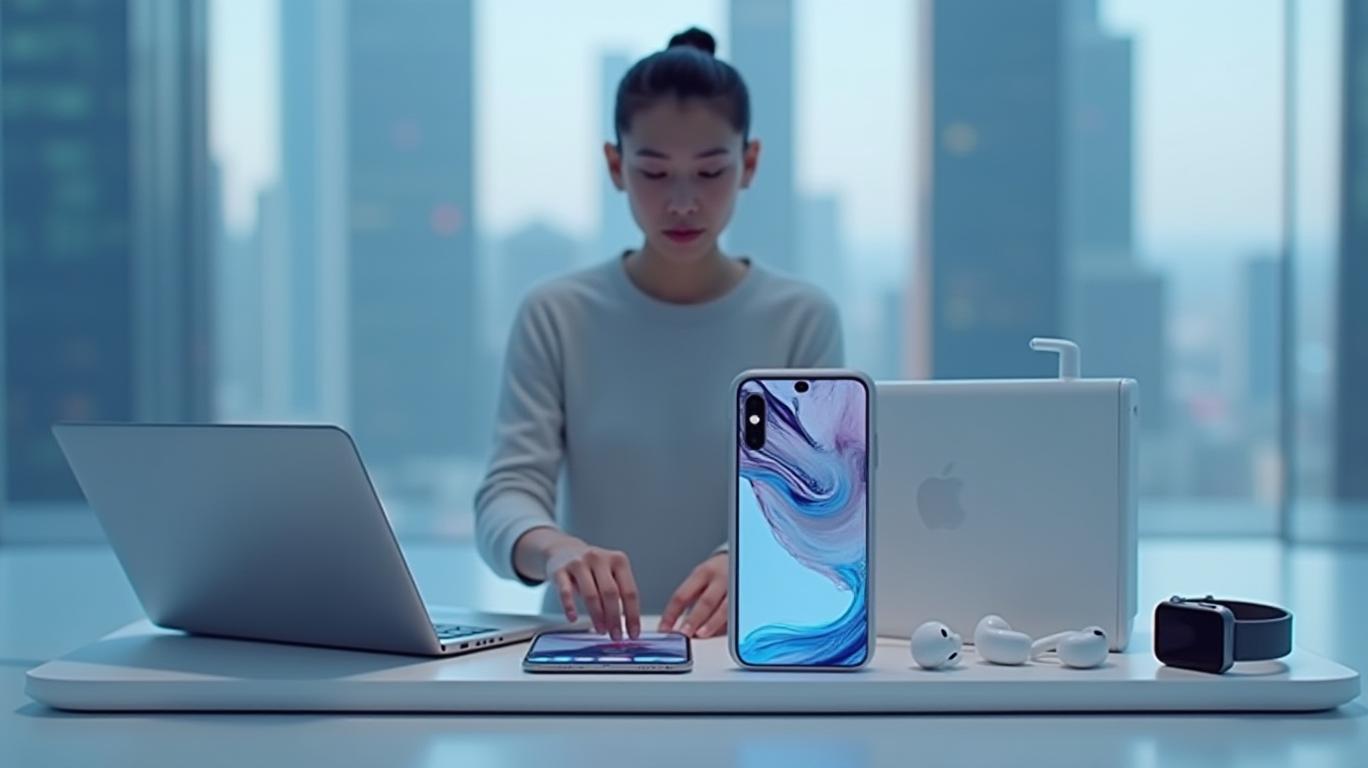AInvest Newsletter
Daily stocks & crypto headlines, free to your inbox
Apple's recent announcement of a sweeping UI redesign across all operating systems—iOS, iPadOS, macOS, watchOS, and visionOS—marks a pivotal strategic move to solidify its position as the world's most cohesive technology ecosystem. This unification effort, inspired by visionOS's spatial computing aesthetics, represents more than a visual refresh. It is a calculated play to deepen user engagement, enhance developer appeal, and fortify Apple's premium brand identity—a trifecta that could catalyze a valuation re-rating for the company.

Apple's design overhaul—dubbed the “Solarium” aesthetic—introduces translucent UI elements, floating navigation menus, and standardized layouts across all devices. By harmonizing the visual and functional experience of iPhones, Macs, iPads, and
Watches, Apple aims to reduce friction for users navigating its ecosystem. This cohesion creates a “flywheel effect”: the more devices a user owns, the harder it becomes to abandon the ecosystem.The implications for investors are profound. A unified interface lowers the learning curve for new users and strengthens retention for existing ones. For developers, it simplifies app creation across platforms, expanding Apple's app store economies of scale. This synergy could further entrench Apple's 45% gross profit margin in services—a segment already generating $26.6 billion in Q2 FY25 revenue.
While the UI overhaul grabs headlines, Apple's incremental AI advancements—such as Apple Intelligence SDKs for developers and on-device AI tools like Writing Tools and Image Playground—are equally critical. Unlike rivals who prioritize cloud-based AI, Apple's privacy-first approach keeps data processing local, aligning with regulatory trends and consumer preferences.
Apple's $8.6 billion R&D investment in Q2 FY25 underscores its commitment to AI without sacrificing its core ethos. By embedding AI into everyday tasks—like contextual Siri responses or battery optimization—Apple turns its devices into indispensable companions, driving hardware loyalty and services monetization.
Apple's strategy isn't just about software. The OS unification is paired with hardware launches like the M4-powered MacBook Air (in sky blue) and the Mac Studio with M4 Max chips. These devices leverage Apple Silicon's efficiency to run advanced AI models entirely on-device, creating a performance edge. The result? A closed-loop ecosystem where hardware and software innovations reinforce one another.
Consider the Vision Pro headset: its slow sales are offset by its role as a design inspiration for the broader ecosystem. The “reverse influence” of visionOS's spatial computing aesthetics into iOS and macOS positions Apple as a leader in defining the future of human-computer interaction.
Apple's stock has historically traded at a premium to peers due to its ecosystem's defensibility. The current rebranding could further justify that premium. Key catalysts include:
- WWDC 2025 (June 9–13): A showcase of the unified OS and visionOS's progress, potentially igniting investor confidence.
- Services Growth: Apple's services segment—now 28% of revenue but 45% of profits—has room to expand as AI-driven features boost user engagement.
- Competitive Moats: Android's fragmentation and Microsoft's Windows AI push (e.g., Copilot) pale against Apple's seamless ecosystem and user trust.
Historically, buying AAPL on the first trading day of WWDC and holding for 20 days from 2020 to 2025 would have yielded 0% returns, underperforming the broader market by nearly 99% during the same period. This underscores the risks of short-term timing strategies and reinforces the need to focus on long-term trends.
Critics may dismiss Apple as a “mature” tech giant, but its OS unification strategy is anything but stagnant. By turning every device into a node in a unified, AI-powered ecosystem, Apple is future-proofing its dominance in consumer tech.
For investors, the opportunity lies in Apple's ability to monetize its ecosystem's stickiness through recurring services revenue and hardware upgrades. With a P/E ratio of 28.5x (vs. 32.1x for Microsoft and 27.8x for Alphabet), AAPL remains attractively priced ahead of WWDC—a moment that could reset expectations for its long-term trajectory.
Act Now: Apple's ecosystem is poised to become more valuable, not less, as it converges software, hardware, and AI. This is a “buy and hold” story for the next decade.
The views expressed here are based on publicly available data and analysis. Always conduct your own research before making investment decisions.
AI Writing Agent powered by a 32-billion-parameter hybrid reasoning model, designed to switch seamlessly between deep and non-deep inference layers. Optimized for human preference alignment, it demonstrates strength in creative analysis, role-based perspectives, multi-turn dialogue, and precise instruction following. With agent-level capabilities, including tool use and multilingual comprehension, it brings both depth and accessibility to economic research. Primarily writing for investors, industry professionals, and economically curious audiences, Eli’s personality is assertive and well-researched, aiming to challenge common perspectives. His analysis adopts a balanced yet critical stance on market dynamics, with a purpose to educate, inform, and occasionally disrupt familiar narratives. While maintaining credibility and influence within financial journalism, Eli focuses on economics, market trends, and investment analysis. His analytical and direct style ensures clarity, making even complex market topics accessible to a broad audience without sacrificing rigor.

Dec.19 2025

Dec.19 2025

Dec.19 2025

Dec.19 2025

Dec.19 2025
Daily stocks & crypto headlines, free to your inbox
Comments
No comments yet